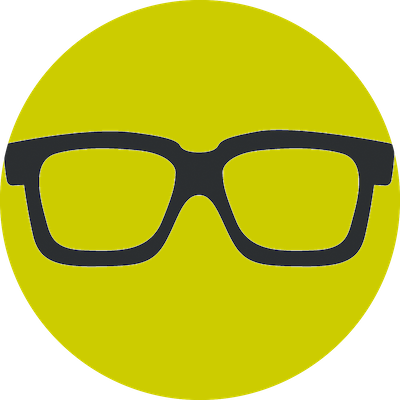#455: quantum of sollazzo – 1 February 2022
The data newsletter by @puntofisso.

Hello, regular readers and welcome new ones :) This is Quantum of Sollazzo, the newsletter about all things data. I am Giuseppe Sollazzo, or @puntofisso. I've been sending this newsletter since 2012 to be a summary of all the articles with or about data that captured my attention over the previous week. The newsletter is and will always (well, for as long as I can keep going!) be free, but you're welcome to become a friend via the links below.
Last week, I was interviewed by Rory Cellan-Jones, who until recently was the BBC's Technology Correspondent, on the work I'm leading in the NHS AI Lab Skunkworks. His write-up can be found in his newsletter "Always On", and you can also listen to the recording of the interview on his podcast. I entirely stand by this excerpt, which captures the reason why I do what I do:

·
Every week I include a six-question interview with an inspiring data person. This week, I speak with Sonja Kuijpers, the data visualization legend behind one-woman Studio TERP, and also an Information Is Beautiful Awards finalist. Sonja has also launched this incredibly good online course on Effective Data Visualization, which is currently on sale.

'till next week,
Giuseppe @puntofisso
This week's edition is sponsored by OpenCage
OpenCage operates a highly available, simple to use, worldwide, geocoding API based on open data like OpenStreetMap. With libraries for python, R, MATLAB, Stata, and over 30 other programming languages it's easy to dive in. Whether you just need to geocode one dataset, or you have an on-going need, we offer cost-effective, flat-fee packages, and all the benfits of Open Data.
Try the API now on the OpenCage demo page.
Six questions to...
Sonja Kuijpers
Sonja is a data illustrator, at her independent STUDIO TERP.
What is your daily data work like and what tools do you use?
When working for clients I mainly handle smaller datasets that I scrutinize in Excel, then create some basic graphs with that and/or RAWGraphs.io and export to Adobe Illustrator to elaborate and bring in design-aesthetics. I also create self-initiated projects where I often gather and harvest the data myself. I always try to experiment with shapes, colours, and layout. As well as bringing insight, I really like my work to be visually appealing.
Tell me about a data project that you're proud of...
I truly loved working on the
Bayreuther Festspiele project. It got to create 3 pages full of data visualization for the Frankfurter Allgemeiner Zeitung. From the family tree of Wagner to a visualization of a fight in one of the operas.
Of course, I am also still proud (although the wording doesn’t feel quite correct here) of my self-initiated
A View On Despair, which was a very personal project on suicide numbers. I won an Information is Beautiful Award with it, which I felt very honoured for.
Hard question. So many great out there. One that always keeps coming back to mind is
this one from National Geographic (Alberto Luca López; Ryan T. Williams and Clare Trainor, also on
Information Is Beautiful) on Plastic profusion. I like the choice for straws to represent the data on microplastics, but what I truly like is the layout, the bars folding around the page when there’s not enough space to hold these large numbers. I think it is such a great way to show great disparities and still be able to ‘read’ the visual and I am still looking for a project where I can incorporate this as well.
All the elements and actions you can see, taste, hear, touch, smell around you.
Give someone new to data a tip or lesson you wish you'd learned earlier.
To not get overwhelmed with all the options and tools. Especially when like me coming from another field. If you already own one skill, see how you can work with that.
Data is or data are...
Data is.
Topical
How big was the Tonga eruption?
"The explosive eruption of the Hunga Tonga-Hunga Ha'apai volcano may be one of the largest recorded in such detail. The blast was visible from space, with images of the massive ash plume going viral over the following days. But just how big was it?"
Great satellite visualization work by Reuters Graphics.

How Twitter is reacting to the Italian presidential election
"Real time sentiment analysis of the last 500 Tweets mentioning 'Quirinale'".
Very good idea, and the source code is available.

Présidentielle 2022 : entre Marine Le Pen et Valérie Pécresse, l’enjeu de la deuxième place
Speaking of presidential elections, France will have one soon, and there are multiple scenarios with plenty of candidates (more than one per party, as per French tradition) that are starting to be explored, with Emmanuel Macron still the overall frontrunner, but not by much. This article from Le Monde comes with a simple simulator. Here's the original French and here the automatic translation into English.

Workers Are Having Their Moment. How Long Can It Last?
"Wages are rising, and just about anyone who wants a job can get one in certain industries. The demand for labor is not expected to abate anytime soon."
Although this article is centred on the US, the trends it describes are visible pretty much everywhere in the Western world, albeit to a different extent.

How sprawling suburbs are stunting productivity in UK cities
A look at why some UK cities are less productive than their EU counterparts, focused on weak transport links and low-density housing, with the consequence that the city centre is less reachable. By Niko Kommenda and Peter Foster at the Financial Times.

Tools & Tutorials
Shademap
Useful for photographers and photojournalists, this website allows you to get a pretty accurate map of shade throughout the day.

Historical Hourly Weather Data by UK City
Something I've done! Well, I just adapted it, to be fully honest – I found an interesting Observable notebook that extracts and visualises weather data from the NOAA database, and managed to modify it to visualize weather data about UK cities. It's not difficult to adapt to other locations, when available.
Many thanks to Andrea Borruso for helping me debug it, and making me realise what a noob I've become at coding...

Choosing the right map projection
How could I not link to The Economist's latest "Off the chart" when it talks about how they create their beautiful maps? Adam Meara explains how the team switches between projections like Mercator, Albers, Robinson, and azimuthal, sometimes using this projection wizard tool.

Data thinking
The 2021 Housing in London report
An interesting Twitter thread by Jim Gleeson, one of the analysts involved in the report, which includes the beautiful map below.

Humanising data: Connecting numbers and people
"How journalists can find the human angle in the data."
Via the brilliant J++ newsletter.
Dataviz, Data Analysis, & Interactive
Musicmap
"Musicmap attempts to provide the ultimate genealogy of popular music genres, including their relations and history. It is the result of more than seven years of research with over 200 listed sources and cross examination of many other visual genealogies."
Honestly mind-blowing.
(via Massimo Conte)

Lego builds itself (back) up
Six Questions interviewee and Datawrapper's support engineer Edurne Morillo analyses data about LEGO sets.

Data Visualization Society survey – part 1: exploratory analysis (tools)
I link to this for two reasons. First, I didn't know this: "Since 2017, the Data Visualization Society launches an annual State of the Industry (SOTI) Survey. The 2021 survey has responses to 60+ questions and was taken by over 2,100 people and the DVS launched a competition to visualise the results into insights."
Second, because this submission by Anne-Sophie Pereira De Sá (which explains her Tableau dashboard) is pretty good for exploring the tools in the survey.
(via Massimo Conte)

AI
Cheezam
An app that detects French cheese in images. Because why not.
"In this limited preview (aka ‘Alpha’ release) the model is currently only able to predict the type of cheese. Future iterations will be built if there is demand. As AI and machine learning experts, we may need to pull in additional experts who are more than just novice cheese lovers."
It didn't work for me when I tried it, but the wine pairing it suggested was spot on.
Sponsored content
The essence of the web, every morning in your inbox
Tens of thousands of busy people start their day with their personalized digest by Refind. Sign up for free and pick your favorite topics and thought leaders. Subscribe here.


















